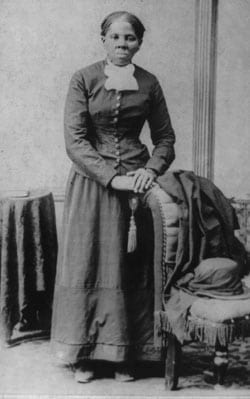
In her opening remarks for the “Freedom Rising Exhibit” last Sunday, Beverly Morgan Welch, executive director of the Museum of African American History, asked attendees last Sunday to “imagine yourself seated here 150 years ago.”
Welch recounted for audience members how notable abolitionists such as Frederick Douglass and William Lloyd Garrison gathered in 1863 in what is now the newly restored African Meeting House to begin recruitment efforts to enlist the first black soldiers from the North to fight in the Civil War.
“With Frederick Douglass at the lead,” she said, “he chose only the best, the bravest and the brightest of our men to serve” in the Massachusetts 54th Regiment led by Colonel Robert Gould Shaw.
Welch also prompted the audience to think about the “Tubman-like” efforts that aided and assisted these men as they fought courageously and gave their lives to end slavery, referring to Harriet Tubman.
Dr. Lois Brown, professor of African American Studies and English at Wesleyan University, helped to illustrate the vitaal role women played, delivering the exhibit’s opening lecture, “Women and the Civil War: Charlotte Forten, Susie King Taylor and Harriet Tubman.” “These were focused, purposeful women,” she said.
Noting the centennial anniversary of Harriet Tubman’s passing, Brown spoke about her unwavering commitment to freeing slaves, first through her heroic efforts in paving the way for the Underground Railroad, then serving as the first woman to lead an armed assault during the Civil War.
Even after Lincoln signed the Emancipation Proclamation in January of 1863, Tubman continued her insistence on racial equality. When Colonel James Montgomery and his troops led an assault on a collection of plantations along the Combahee River in South Carolina, it was Tubman that served as his key advisor and accompanied the raid.
In her lecture, Brown reported how Tubman successfully led 300 black soldiers in this mission, not losing any of them to fatalities. “General Tubman,” (as she was aptly named by Abolitionist John Brown), along with Colonel Montgomery and Union Troops were able to rescue over 700 slaves during this mission.
Although Tubman’s contributions were pivotal in this attack, newspapers praised Montgomery for their success while Tubman earned the praise and respect of the men that she led. Brown said that Harriet Tubman proved herself “indispensable to the Union Mission.”
Susie King Taylor, the first African American to teach publicly, was admittedly disappointed by the outcome of the Civil War. Brown said that Taylor also had reservations about the nation’s ability to remember, so in 1892, Taylor become the first and only African American woman to publish a memoir of her wartime experiences.
After marrying a soldier, Edward King, in the 33rd United States Colored Infantry Regiment, Taylor provided domestic support to the troops. She became a laundress and since the first colored troops did not receive any pay, Brown points out that it was not uncommon for women and wives to work and do what was necessary to support their families.
It wasn’t until after the war, while living in Boston, that Taylor started to question their freedom.
“Living here in Boston,” she said, “where black men are given their freedom, I wonder if white men know the true meaning of brotherhood.”
She determined for herself that the war was really about land — who would own it and who would work it.
Brown said Taylor often wondered if their situation became more hopeless after the Civil War. Both Tubman and Taylor served as nurses during the Civil War. Brown said that they moved from sick bed to sick bed, caring for soldiers who had become stricken with smallpox and other diseases, remarkably never getting sick themselves.
Charlotte Forten, a native of Philadelphia, was sent north by her parents to receive a better education. Living with abolitionists, Forten had the opportunity to study Literature and Teaching at the Salem Normal School, now Salem State University. She became the school’s first African American student and a graduate of the class of 1856. Brown says that Forten was also the first woman of color to teach a class of white students and the first African American woman to journey south during the Civil War to teach freed slaves on the Sea Islands off the coast of South Carolina.
It was during this time that Forten developed a close friendship with Colonel Robert Gould Shaw, Commander of the all Black 54th Massachusetts Regiment during the Sea Island Campaign. Forten documented her experiences of the war, and in one journal entry Brown read her description of Shaw as a “wonderfully lovable person… so noble and pure.”
She also wrote, “I hope to have the pleasure of seeing him again.” It was no surprise that Forten was grief-stricken and devastated when members of the 54th Regiment and Colonel Shaw were attacked and killed on Fort Wagner.
Forten wrote, “Oh how sad, it’s too terrible to write… I can write no more.”
Upon closer examination of both the women’s lives, Brown emphasizes how the Civil War prompted Susie King Taylor to write her memoirs, but in direct contrast, the Civil War had an opposite effect on Charlotte Forten, bringing her to a place where she could write no more.
As the lecture came to a close, one audience member inquired about any periods of self-doubt experienced by the woman. Brown suggests that while each women experienced the war individually and endured their own struggles, all of them sensed that their actions and purpose served something higher and were a part of something bigger and greater.
It is because of this fact, Brown said, that “they had the ability to overcome.”
Before ending the lecture portion of the event, Beverly Morgan Welch and Boston Postmaster James J. Holland awarded descendants of John J. Smith, William Lloyd Garrison, Norwood Penrose Hallowell and Augustus Monroe plaques of the Emancipation Proclamation Stamp commemorating the 150th anniversary of the Emancipation Proclamation.






